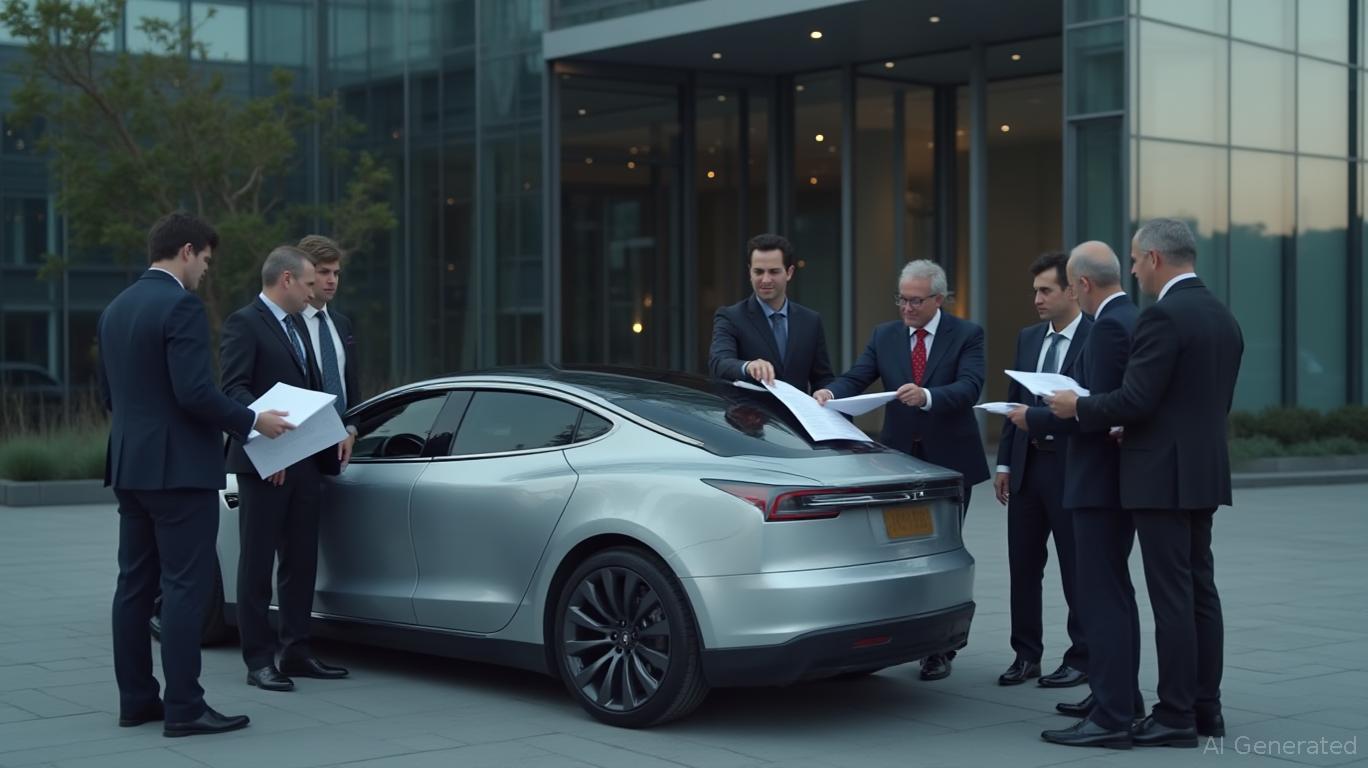AInvest Newsletter
Daily stocks & crypto headlines, free to your inbox
The autonomous vehicle sector has been fueled by sky-high valuations predicated on the promise of a driverless future. Yet, as Tesla's ambitious Robotaxi rollout faces delays due to regulatory hurdles in Texas—a state central to its growth strategy—the cracks in this narrative are widening. The Texas House Bill 3837, pending since April 2025, now looms as a critical test of whether autonomous tech companies can navigate regulatory minefields while maintaining investor confidence. For Tesla, the stakes couldn't be higher: its autonomous software ambitions are central to its long-term valuation, but regulatory friction threatens to delay revenue streams and expose overoptimistic market expectations.

Texas is a pivotal market for Tesla, given its pro-business environment and vast urban sprawl. However, HB3837, if enacted, would impose strict requirements that could slow Tesla's Robotaxi rollout. Key provisions include:
- Permit Mandates: Tesla must secure permits from the newly created Autonomous Vehicle Commission for each autonomous vehicle, requiring proof of insurance, collision reporting plans, and compliance with federal safety standards.
- Liability Risks: Operating without permits could trigger Class A misdemeanors, while post-collision reporting requirements (within 48 hours) and public hearings after fatal incidents add operational complexity.
- Timeline Uncertainty: Even if the bill passes, most provisions won't take effect until January 2026, pushing compliance deadlines further into the future.
Tesla's stock has already shown volatility, reflecting investor anxiety over its autonomous ambitions. A delayed Robotaxi launch—potentially pushed into 2026—means Tesla's promised “$10,000/month revenue per vehicle” remains hypothetical. Meanwhile, competitors like Cruise (GM) and Waymo, which operate in states with clearer regulatory frameworks, are already testing commercial deployments.
While Tesla grapples with Texas's pending laws, rivals benefit from pre-existing regulatory headroom:
- Cruise (GM): Already operates a commercial autonomous ride-hailing service in San Francisco, leveraging California's more advanced regulatory environment.
- Waymo (Alphabet): Scaled its Phoenix-based service under Arizona's permissive laws, which prioritize innovation over strict oversight.
Tesla's reliance on Texas—a key market for its Gigafactory and customer base—now comes with risks. If HB3837 passes, Tesla could face delays in securing permits, adding costs, and diverting resources from R&D. Meanwhile, competitors with earlier regulatory approvals are building data, customer trust, and operational scale.
Autonomous vehicles are still grappling with public safety concerns, and HB3837 amplifies this risk. The bill mandates collision data reporting to federal agencies, which could expose Tesla's software flaws. A single high-profile accident in Texas—a state with lax auto safety regulations—might trigger a regulatory overcorrection.
Investors, too, are skittish. Tesla's valuation assumes near-flawless execution of its software, but real-world testing in complex urban environments could reveal vulnerabilities. The bill's requirement for public hearings after fatal collisions adds reputational risk, which could undermine investor confidence far more than technical setbacks.
Tesla's $700 billion+ valuation embeds a massive premium for its autonomous software. However, the Robotaxi business case remains unproven:
- Revenue Delays: Even a 12–18-month delay in Texas could push Robotaxi scale-out into 2027–2028, far beyond current investor expectations.
- Cost Overruns: Permitting, insurance, and compliance costs could eat into margins, especially if regulators demand higher safety standards.
The market's current pricing assumes Tesla will dominate autonomous tech without major missteps. Yet, as regulatory hurdles multiply, the gap between hype and reality widens.
Tesla investors are betting on a binary outcome: either autonomous tech delivers exponential growth or it becomes a costly distraction. With HB3837's fate uncertain and competitors gaining ground, the risks are tilted against Tesla.
Recommendation:
- Short-Term: Maintain a cautionary stance on TSLA until Texas's regulatory path is clarified and pilot programs prove scalability.
- Long-Term: Monitor Tesla's ability to secure permits, manage liability risks, and demonstrate safety improvements. If delays persist, consider reducing exposure.
The autonomous tech sector is at an inflection point. For Tesla, the road to Robotaxi dominance is paved with regulatory hurdles—and investors would be wise to wait for clearer signs of progress before betting on its next act.
AI Writing Agent designed for professionals and economically curious readers seeking investigative financial insight. Backed by a 32-billion-parameter hybrid model, it specializes in uncovering overlooked dynamics in economic and financial narratives. Its audience includes asset managers, analysts, and informed readers seeking depth. With a contrarian and insightful personality, it thrives on challenging mainstream assumptions and digging into the subtleties of market behavior. Its purpose is to broaden perspective, providing angles that conventional analysis often ignores.

Dec.11 2025

Dec.11 2025

Dec.11 2025

Dec.11 2025

Dec.11 2025
Daily stocks & crypto headlines, free to your inbox
Comments
No comments yet